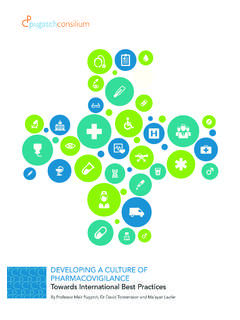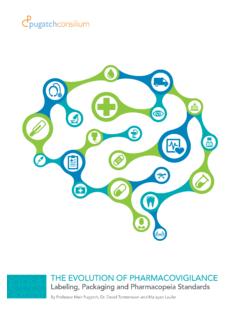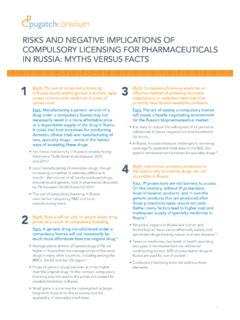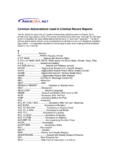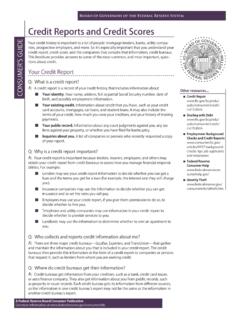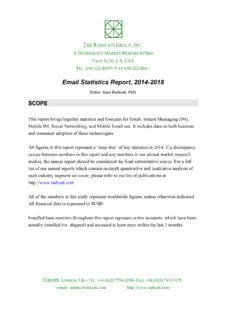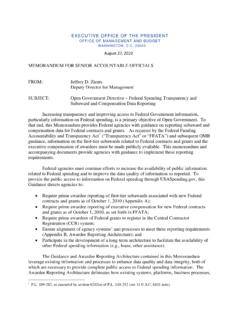Transcription of BENCHMARKING SUCCESS - pugatch-consilium.com
1 BENCHMARKING SUCCESS . Evaluating the Orphan Regulation and its impact on patients and rare disease R&D in the European Union SECTION. This report was initiated and funded by Shire International GmbH. Shire is now part of Takeda. The views represented here are those of the authors only. Copyright Pugatch Consilium 2019. The moral right of the authors has been asserted. All rights reserved. Without limiting the rights under copyright reserved above, no part of this publication may be reproduced, stored or introduced into a retrieval system, or transmitted, in any form or by any means (electronic, mechanical, photocopying, recording or otherwise), without the prior written permission of both the copyright owner and the publisher.
2 2. BENCHMARKING SUCCESS . CONTENTS. LIST OF ABBREVIATIONS 5. EXECUTIVE SUMMARY 7. INTRODUCTION AND ISSUE OVERVIEW 15. 1 THE CHALLENGES IN DEVELOPING A BIOPHARMACEUTICAL 17. TREATMENT FOR RARE DISEASES. The biopharmaceutical R&D process 17. Developing new treatments for rare diseases a critical challenge 18. 2 O. VERCOMING THE CHALLENGES: ORPHAN LEGISLATION 21. IN THE EU AND GLOBALLY. The EU Orphan Regulation An overview 21. The patchy status of orphan medicinal product development schemes worldwide 24. 3 THE IMPACT OF THE EU ORPHAN REGULATION ON ORPHAN 25. DESIGNATIONS AND ORPHAN PRODUCT APPROVALS.
3 4 THE IMPACT OF THE EU ORPHAN REGULATION ON CLINICAL 31. RESEARCH ACTIVITY INTO RARE DISEASES. 5 MORE RESEARCH, MORE DESIGNATIONS, MORE PRODUCTS, 39. BUT WHAT ABOUT ON-THE-GROUND PATIENT ACCESS? CONCLUSION 45. NOTES 46. 3. CONTENTS (continued) TABLES AND FIGURES Figure 1 The biopharmaceutical R&D process 18. Table 1 Unique challenges in developing a treatment for rare diseases 19. Table 2 Criteria for achieving an orphan designation under the 21. EU Orphan Regulation Figure 2 Incentives for orphan medicinal product development under the 22. EU Orphan Regulation Table 3 Developing an orphan medicine: A critical global challenge without 24.
4 Enough support and incentives Figure 3 Annual rates of applications for orphan designation and approval and 25. COMP opinions, 2000-2017. Figure 4 Annual rate of approval of orphan medicinal products by the EMA 26. and the FDA, 2000-2017. Figure 5 Annual rate of approval of orphan medicinal products that also treat 27. paediatric populations v. adult populations only, 2000-2017. Figure 6 New clinical trials on rare diseases, selected economies / region, 2006-2016 32. Figure 7 New clinical trials on rare diseases in the EU-5 countries, 2006 v. 2016 33. Figure 8 Enrolment rate for clinical trials on rare diseases in the EU-5 countries, 34.
5 2006-2016. Figure 9 Enrolment rate for clinical trials on rare diseases in the EU-5 countries, 34. 2006 v. 2016. Figure 10 New early-phase clinical trials on rare diseases, selected economies / 35. region, 2006-2016. Figure 11 New clinical trials on rare diseases using biologic medicines, 36. selected economies / region, 2006-2016. Figure 12 Access to orphan medicinal products in the EU-5 countries: 40. Rates of and time to reimbursement Figure 13 EURORDIS Access Campaign: Rates of patients with rare diseases 41. reporting insufficient reimbursement as an obstacle to receiving proper treatment, 19 European countries, 2016.
6 Figure 14 EURORDIS Rare Barometer survey: Differences in access to treatment 42. between patients with rare diseases and the general population 4. BENCHMARKING SUCCESS . LIST OF ABBREVIATIONS. CAGR Compounded Annual Growth Rate COMP Committee for Orphan medicinal Products EC European Commission EMA European Medicines Agency ERN European Reference Networks EU European Union EURORDIS European Organisation for Rare Diseases FDA United States' Food & Drug Administration HTA Health Technology Assessment IP Intellectual Property NICE National Institute for Health and Care Excellence NIH National Institute of Health OHE Office of Health Economics P&R Pricing & Reimbursement R&D Research & Development RCT Randomised Clinical Trial SME Small & Medium Enterprise SPC
7 Supplementary Protection Certificate UK United Kingdom US United States of America USD United States Dollars 5. 6. BENCHMARKING SUCCESS . EXECUTIVE SUMMARY. Developing a novel biopharmaceutical product is an expensive, risky and time- consuming enterprise that takes between 10 to 15 years on average at an estimated total cost of billion. Developing a novel biopharmaceutical product introduction of new products and therapies onto that targets a rare disease (called orphan the EU market. How, for example, has the Orphan medicine) is an even more challenging process; Regulation affected rates of product development patient populations are significantly smaller and and clinical research in the EU?
8 Are there more less is known about individual diseases. products and therapies for rare diseases approved and on the market in the EU today than in 1999? Acknowledging the challenges in orphan Similarly, are there more or fewer clinical trials medicinal product development, many countries taking place today in the EU than prior to 1999 and have enacted laws and developed special the passage of the Orphan Regulation? programs to encourage orphan medicinal product development through regulatory and financial Second, the report seeks to examine some of the incentives such as tax credits, research grants, a current and future big challenges and questions faster and cheaper market approval process and about R&D and new product development for rare scientific assistance, and, most importantly, a diseases.
9 This includes questions such as how to defined period of market exclusivity. This includes continue to incentivise the development of orphan the European Union which in 1999 introduced drugs specific for paediatric use? How to ensure Regulation (EC) No 141/2000 (the Orphan real patient access to new medicines after product Regulation ). registration and market authorisation is complete? And how to continue to provide effective In light of the EU Commission's current incentives through defined market exclusivity consultation on paediatric medicines and periods? rare diseases Evaluation of the legislation on medicines for children and rare diseases One key feature of the report is that it draws (medicines for special populations) - the purpose upon the expertise and insights and ideas from a of this report is twofold.
10 Panel of leading experts drawn from the medical, regulatory and academic field. Their thoughts and First, to assess whether the EU Orphan Regulation insights are interwoven throughout the report. has accomplished its aim of incentivising R&D. into rare diseases and the development and 7. EXECUTIVE SUMMARY. Key findings The EU-5 countries are also regional leaders in providing rare diseases patients with early In its first evaluation of the EU Orphan access to potential treatment through clinical Regulation accomplishments in 2006 the EC trials: some million patients were enrolled concludes that the orphan legislation in the EU to clinical trials on rare diseases in the EU-5.
